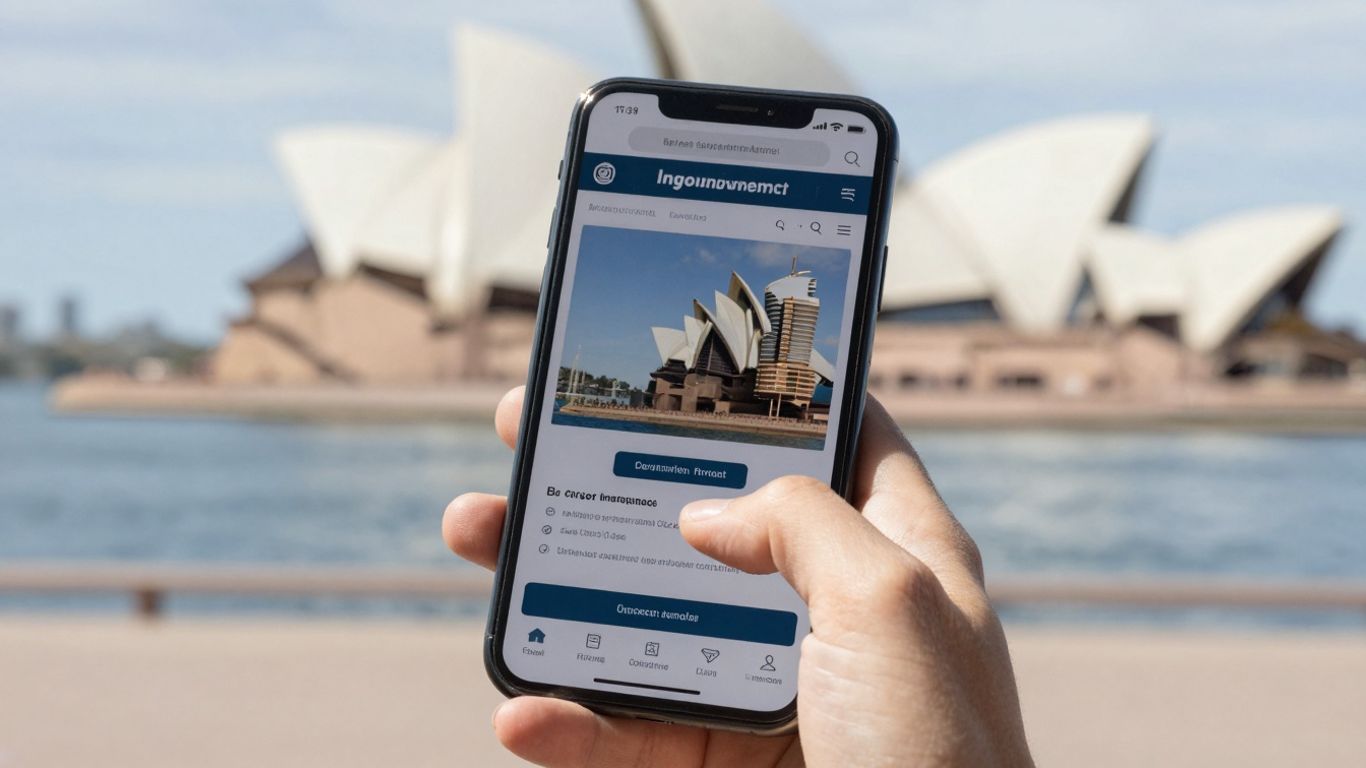Alright cobbers, let’s talk about money. Specifically, how to get a grip on it using the zero based budgeting formula. It sounds fancy, but really, it’s just a way to make sure every dollar you earn has a job to do. Think of it like packing for a trip – you wouldn’t just chuck stuff in a bag, right? You plan what you need. This guide is all about helping you do just that with your hard-earned cash, Aussie style.
Key Takeaways for Aussies
- The zero based budgeting formula means every dollar of your income is assigned a purpose, aiming for income minus expenses to equal zero.
- Adapting the zero based budgeting formula for Australia involves understanding local income sources and common expenses like rent, utilities, and the ever-present cost of a good flat white.
- Effectively tracking your spending is vital; use apps or simple spreadsheets to see where your money is actually going, not where you think it’s going.
- By using the zero based budgeting formula, you can pinpoint areas of overspending and redirect those funds towards savings or paying off debt faster.
- Sticking to your budget long-term requires flexibility to adjust the zero based budgeting formula as your life circumstances change, like a new job or family additions.
Understanding the Zero Based Budgeting Formula

So, what exactly is this zero-based budgeting thing? It’s a bit different from how most people think about budgets. Instead of just looking at what you spent last month and tweaking it, you start from scratch, or ‘zero’, every single time. Every dollar you earn needs a job. That means you’re not just guessing where your money goes; you’re telling it exactly where to go. It’s about being really intentional with your cash.
What is Zero Based Budgeting?
Basically, zero-based budgeting means that at the end of each budgeting period (usually a month), your income minus your expenses should equal zero. This doesn’t mean you have no money left; it means all your money has been assigned a purpose. This could be for spending, saving, investing, or paying off debt. It forces you to look at every single expense, no matter how small, and decide if it’s truly necessary and aligns with your financial goals. It’s a bit like giving every dollar a specific task to perform.
Why Zero Based Budgeting Works
This method works because it makes you confront your spending habits head-on. You can’t just carry over a surplus or deficit from the previous month without thinking. You have to justify every expense. This process often reveals areas where you might be overspending without realising it, like those daily coffees or subscription services you barely use. By actively assigning every dollar, you gain a much clearer picture of your financial situation and can make more informed decisions about where your money is best used. It’s a proactive approach to managing your finances, rather than a reactive one.
The Core Components of the Formula
At its heart, the zero-based budgeting formula is pretty straightforward:
- Income: This is all the money you expect to receive during the budget period. Be realistic here – use your net income after tax.
- Expenses: This covers everything you spend money on. It’s broken down into:
- Needs: Essential living costs like rent or mortgage, utilities, groceries, transport, insurance.
- Wants: Discretionary spending like entertainment, dining out, hobbies, new clothes.
- Savings & Debt Repayment: Money set aside for future goals or to pay down loans and credit cards.
So, the formula looks like this:
Income - Expenses (Needs + Wants + Savings & Debt Repayment) = 0
If you find you have money left over after assigning jobs to all your expenses, that’s great! You just need to allocate that surplus to another category, like savings or debt repayment, until you reach zero. If you’re spending more than you earn, you’ll need to go back and trim your expenses until the equation balances out. It’s a constant balancing act, but one that gives you a lot of control. This method is a powerful way to get your finances in order, similar to how zero-based budgeting works.
You’re essentially creating a plan for every dollar before the month even begins. It requires a bit of effort upfront, but the clarity and control it provides are well worth it.
Applying the Zero Based Budgeting Formula Down Under
Right then, let’s get this zero-based budgeting thing sorted for us Aussies. It’s not rocket science, but it does mean you’ve gotta be a bit organised. First off, we need to figure out exactly what’s coming in. This means looking at all your pay slips, any side hustles, or even that bit of rent you get from the granny flat. Every single dollar needs a job.
Tailoring the Formula for Australian Households
Now, our lives here are a bit different, aren’t they? We’ve got the usual bills, sure, but also things like council rates, maybe a mortgage with Aussie interest rates, and let’s not forget the cost of a decent snag for the barbie. We need to make sure our budget reflects this. Think about your regular expenses like groceries, petrol, electricity – the stuff that keeps the lights on and the fridge full. Then there are the less frequent but still important ones, like car registration or annual insurance premiums. It’s about being realistic with what you actually spend money on.
Income Allocation Strategies
Once you know what’s coming in, it’s time to tell it where to go. This is where the zero-based part really kicks in. Every dollar of your income should be assigned to a category. This could be bills, savings, debt repayment, or even just a bit for fun money. A good way to start is by listing your fixed expenses first – the ones that don’t change much each month. Then, move onto your variable expenses, which can fluctuate. For example:
- Housing: Rent/Mortgage, Rates, Body Corporate
- Utilities: Electricity, Gas, Water, Internet
- Transport: Car Loan, Insurance, Registration, Fuel, Public Transport
- Food: Groceries, Eating Out
- Personal: Clothing, Haircuts, Hobbies
- Savings: Emergency Fund, Retirement, Specific Goals
- Debt Repayment: Credit Cards, Personal Loans
It’s a good idea to look at your bank statements from the last few months to get a clear picture of where your money has been going. This helps you create realistic spending targets for each category. You might even find that using a service like MyBudget review could help you get a handle on this initial allocation.
Tracking Expenses Effectively
This is probably the most important bit, and where a lot of people fall over. You’ve made your plan, but now you need to actually track what you’re spending against that plan. There are heaps of ways to do this. You could use a simple spreadsheet, a notebook, or even one of the many budgeting apps. The key is to find a method that works for you and that you’ll actually stick with. Make it a habit to record your spending daily or at least every few days. It might feel a bit tedious at first, but it gets easier. You’ll start to see patterns and understand where your money is really going. This is how you can start making informed decisions about your spending and get your budget working for you, not against you. Remember, the goal is to have every dollar accounted for, so your income minus your expenses and savings equals zero. It’s about giving every dollar a purpose, which is the core of the bottom-up budgeting approach for managing your household finances.
Maximising Your Money with Zero Based Budgeting
Once you’ve got your zero based budget formula sorted, the real fun begins: making your money work harder for you. It’s not just about tracking where every dollar goes; it’s about being smart with it. This is where you really start to see the benefits of giving every dollar a job.
Identifying and Eliminating Unnecessary Spending
This is often the most eye-opening part of zero based budgeting. You’re forced to look at every single expense and ask, ‘Do I really need this?’ Think about those subscriptions you forgot about, the daily coffees, or impulse buys that add up. We’re talking about things like that gym membership you haven’t used in months, or the streaming services you only watch one show on. It’s about being honest with yourself.
Here’s a quick way to spot the sneaky spenders:
- Subscription Audit: List all your recurring payments. Cancel anything you don’t actively use or get significant value from.
- ‘Wants’ vs. ‘Needs’ Review: Go through your discretionary spending categories. Can you reduce the frequency or cost of these items?
- Impulse Buy Tracker: For a week, write down every unplanned purchase. You might be surprised at what you find.
Cutting back on the little things might seem minor, but collectively, they can free up a surprising amount of cash. It’s about conscious spending, not deprivation.
Prioritising Savings and Debt Repayment
With your budget now showing exactly how much you have left after essential expenses, you can be deliberate about what happens next. Zero based budgeting makes it clear where you can redirect funds that were previously going to unnecessary spending. This means you can aggressively tackle savings goals or pay down debt faster.
Consider this approach:
- Debt Snowball/Avalanche: Allocate a set amount each month to pay down debt. Choose the method that motivates you most – paying off the smallest debts first (snowball) or tackling the highest interest rates first (avalanche).
- Emergency Fund Boost: If you don’t have a solid emergency fund (3-6 months of living expenses), make this a top priority. Any extra cash can go straight here until it’s fully funded.
- Investment Contributions: Once debt is managed and your emergency fund is healthy, direct surplus funds into investments to build long-term wealth. This is where your money starts working for you.
Achieving Financial Goals Faster
By systematically cutting out waste and directing those funds towards your goals, you’ll find you reach them much sooner than you thought possible. Whether it’s saving for a house deposit, planning a holiday, or aiming for early retirement, a zero based budget provides a clear roadmap. It transforms vague aspirations into actionable steps. You can see exactly how much you need to save each month and how cutting back in certain areas directly impacts your timeline. This clarity is incredibly motivating. Many Australians find that by using a budgeting app, they can track progress and stay on course more easily. This method helps you make every dollar count towards your future.
Common Pitfalls and How to Avoid Them
Sticking to Your Budget Long-Term
Look, we all start with good intentions, right? You’re fired up, ready to track every cent, and then… life happens. Maybe you had an unexpected bill, or you just got a bit slack with logging your coffees. It’s easy to fall off the wagon. The trick is not to see it as a total failure. Think of it as a minor detour, not the end of the road. If you miss a day or two of tracking, just pick it back up. Don’t let a small slip-up derail your whole plan. It’s about consistency over perfection. Remember why you started this – to get a handle on your finances and build a better future. That goal is still there, even if you had a splurge on a new pair of RM Williams boots.
Adjusting the Formula for Life Changes
Your budget isn’t set in stone. Life throws curveballs, and your budget needs to be flexible enough to handle them. Did you get a pay rise? Awesome, adjust your income and allocate that extra cash. Is your rent going up? You’ll need to find savings elsewhere. Maybe you’ve had a baby, or your car finally gave up the ghost. These are big changes that require a serious look at your budget. It’s not about rigidly sticking to numbers that no longer make sense; it’s about adapting your plan to your current reality. Regularly review your budget, perhaps monthly or quarterly, to make sure it still aligns with your life.
Leveraging Budgeting Tools and Apps
Trying to do all this with just a pen and paper can be a real headache, especially here in Australia with our unique spending habits. Thankfully, there are heaps of apps and online tools designed to make budgeting easier. Many of them can link directly to your bank accounts, automatically categorising your spending. This saves a massive amount of time and reduces the chance of errors. Some popular options even offer features tailored for the Australian market, like integrating with the ATO for tax-related planning. Finding the right tool can make the whole process feel less like a chore and more like a helpful assistant. It’s about making the system work for you, not the other way around. Using a good budgeting app can really streamline the process.
Don’t get discouraged if your first attempt isn’t perfect. Budgeting is a skill, and like any skill, it takes practice. Be patient with yourself and celebrate the small wins along the way. Every dollar accounted for is a step in the right direction.
Success Stories: Real Aussies Using the Formula

It’s one thing to read about zero-based budgeting, but it’s another to see how it’s actually changed lives for everyday Aussies. We’ve heard from heaps of people who’ve gone from feeling stressed about money to being totally in control, and it’s pretty inspiring stuff. Let’s look at a couple of examples.
From Overwhelmed to In Control
Meet Sarah and Tom, a couple from Brisbane with two young kids. They were drowning in credit card debt and felt like their paycheques just vanished. After implementing a zero-based budget, they started by tracking every single dollar. It was tough at first, but seeing where their money was actually going was a real eye-opener. They identified that they were spending over $500 a month on impulse buys and eating out.
Here’s a snapshot of their initial budget adjustments:
| Category | Old Spending | New Budget | Savings |
|---|---|---|---|
| Groceries | $1200 | $900 | $300 |
| Eating Out | $600 | $200 | $400 |
| Entertainment | $400 | $150 | $250 |
| Impulse Buys | $500 | $0 | $500 |
| Total Savings | $1700 | $1250 | $1450 |
By cutting back on non-essentials and planning meals, they freed up over $1400 a month. This extra cash went straight towards paying down their credit cards. Within 18 months, they were debt-free.
Building Wealth Through Zero Based Budgeting
David, a single bloke from Perth, was earning a decent wage but felt like he wasn’t getting ahead. He decided to give zero-based budgeting a red hot go. His main goal was to start investing for his future. He used the formula to allocate a significant portion of his income to savings and investments each month. He also looked at his expenses and found ways to save, like switching to cheaper car insurance and cutting his phone plan.
David’s approach focused on:
- Aggressive Saving: He set aside 30% of his income for investments.
- Mindful Spending: He only bought things he truly needed or that added value to his life.
- Automating Finances: He set up automatic transfers to his savings and investment accounts right after payday.
He found that by being intentional with every dollar, he could build his investment portfolio much faster than he thought possible. He’s now on track to retire early.
Achieving Financial Freedom
For Maria and Ben, a couple in Melbourne, financial freedom meant being able to travel more and not worry about bills. They used zero-based budgeting to get their spending under control and build up an emergency fund. They also started using a bucket budgeting system to separate their savings for different goals, like holidays and home renovations.
They realised that budgeting wasn’t about restriction; it was about giving their money a purpose and making sure it worked for them, not against them. This shift in mindset was key to their success.
They found that by having clear financial goals and a plan to get there, they felt more motivated and less stressed about their money. This allowed them to enjoy life more, knowing their finances were sorted.
Wrapping Up Your Budgeting Journey
So, there you have it. We’ve gone through the nuts and bolts of zero-based budgeting, Aussie-style. It might seem like a bit of work at first, getting every dollar accounted for. But honestly, once you get the hang of it, it’s pretty straightforward. You’ll start seeing where your hard-earned cash is actually going, and you can make better choices about it. Think of it as giving your money a job to do, instead of just wondering where it all disappeared to. Give it a crack, stick with it, and you’ll be well on your way to feeling more in control of your finances. Good on ya!
Frequently Asked Questions
What’s the main idea behind zero-based budgeting?
Basically, zero-based budgeting means every single dollar you earn gets a job. You start with your total income, then you subtract all your expenses, savings, and debt payments. The goal is to have zero dollars left over, meaning all your money is accounted for. It’s like making sure every cent has a purpose, so nothing gets wasted.
Why is this budgeting method so effective?
It works because it forces you to be really clear about where your money is going. Instead of just guessing, you’re actively deciding what each dollar is for. This helps you see where you might be overspending and where you can save more, making it easier to reach your money goals.
How do I make this budget work for my Australian household?
For Aussies, it’s about fitting your income and spending habits into the Australian context. You’d list all your income sources, like wages from your job or any side hustles. Then, you’d break down your expenses into categories that make sense for you, like rent or mortgage, groceries, electricity bills, and maybe your weekend coffees.
What’s the best way to keep an eye on my spending?
You can track your spending using a simple spreadsheet, a notebook, or even a budgeting app. The key is to be consistent. Regularly check your bank statements and credit card bills to see where your money has gone and compare it to your budget plan. This way, you can catch any surprises early on.
How can I find extra money to save or pay off debt?
This is where you look closely at your expenses and find things you can cut back on. Maybe it’s fewer takeaway meals, cancelling unused subscriptions, or finding cheaper alternatives for things you buy regularly. Every little bit saved can be put towards your goals, like paying off a credit card or saving for a holiday.
What if my income or expenses change?
Life throws curveballs! If your income changes, or you have unexpected expenses like a car repair, you just need to adjust your budget. Go back to your zero-based plan and see where you can shift money around to cover the new costs. It’s a flexible tool, not a rigid rulebook.





